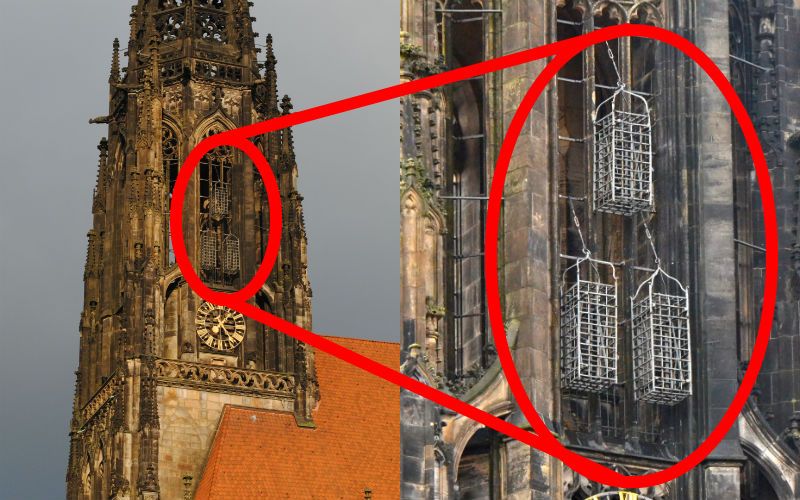If you visit St. Lambert’s Church in Münster, Germany and look up, you will find something that might be a bit alarming: three human sized cages hanging from the steeple.
How did they get there – and why? It all goes back to the 16th century, when Europe was in the midst of the Protestant Reformation.
John of Leiden was born in 1509, just a few years before Luther published his 95 theses. By the time he was a young man, the Reformation was in full swing and upheaval was spreading throughout Europe.
He secretly became an Anabaptist, then traveled to Münster, Germany in 1533, where he heard there were good preachers. Anabaptist “prophet” Jan Matthys soon seized power and expelled all the faithful Catholics from the city. He then banned private property and money and established communism.
A Catholic army then laid seige to the city. Matthys led an attack on the seige on Easter Sunday in 1534, but failed and was killed. A few months later, John of Leiden declared himself King of Münster.
It is alleged he established forced polygamy in the city during his short rule, with John supposedly taking 16 wives for himself, and even executing one of his wives for disobedience. Historians note, however, that these charges come from his enemies and may be untrue or exaggerated.
By the end of 1535, John’s armies were defeated by the Catholic army and John was captured. On January 22nd, 1536, John and two of his subordinates were brutally tortured with hot tongs for hours before finally being killed with a dagger through their hearts.
That’s where the cages come in.
The remains of John and his two subordinates were placed in the cages and hung from the steeple of the church to rot in the open air. Their bodies hung there for about half a century, when their bones were finally removed. The cages, however, were left in place as a reminder.
And they are still there to this day.
Not exactly how the Church operates today, no? But maybe that’s a good thing…
[See also: How All the Apostles Died & Where You Can Find Their Remains Today]
[See also: Catholic vs. Protestant Heaven, According to the Simpsons]

